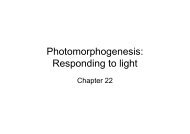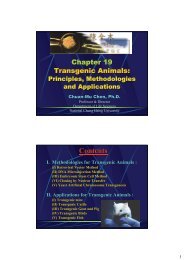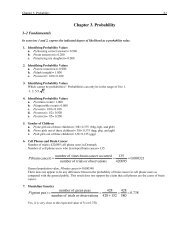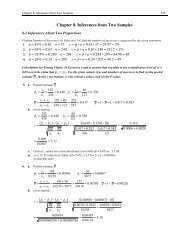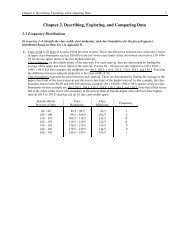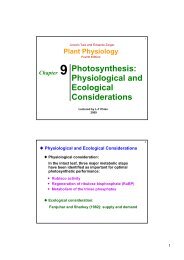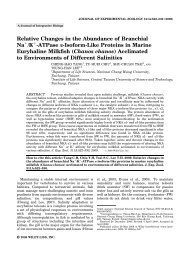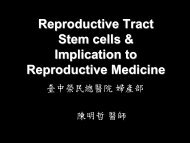Chapter 7. Hypothesis Testing with One Sample
Chapter 7. Hypothesis Testing with One Sample
Chapter 7. Hypothesis Testing with One Sample
You also want an ePaper? Increase the reach of your titles
YUMPU automatically turns print PDFs into web optimized ePapers that Google loves.
208 <strong>Chapter</strong> 7: <strong>Hypothesis</strong> <strong>Testing</strong> <strong>with</strong> <strong>One</strong> <strong>Sample</strong>9. Cell Phones and CancerFirst, we check the requirements. The sample does not appear to be a simple random sample, but the subjectsmay comprise a random sample that is representative of the population. The conditions for a binomial aresatisfied. The sample size is 420,095 <strong>with</strong> the claim that the rate at which cell phone users develop cancer ofthe brain or nervous system is different than 0.0340%, making p = 0.00034, sonp = 420,095× 0.000340 = 142.8323 and nq = 420,095× 0.999660 = 419,952.168. The requirements aresatisfied.The claim is that the rate at which cell phone users develop cancer of the brain or nervous system is differentthan 0.0340%, so this is a two-tailed test. In the sample, 135 developed cancer of the brain or nervous system.The sample proportion is p ˆ = x / n = 135/420,095 = 0.000321.H 0 : p = 0.000340H 1 : p 0.000340≠The test statistic is z = p ˆ − p 0.000321− 0.000340= =−0.668pq 0.000340× 0.999660n420,095In a two-tailed test at the 0.005 significance level, the critical values are ±z α /2=±z .0025=±2.81.Since this is a two-tailed test and the test statistic is to the left of center, the P-value is twice the area to the leftof the test statistic. Using Table A-2, we find that the P − value = 2 × (0.2514) = 0.5028.We fail to reject the null hypothesis.There is not sufficient sample evidence to support the claim that the rate of cancer of the brain or nervoussystem is different than the 0.0340% rate for those who do not use cell phones. Users of cell phones need notbe more concerned <strong>with</strong> cancer of the brain or nervous system than those who do not use cell phones.10. Drug <strong>Testing</strong> of Job ApplicantsFirst, we check the requirements. The sample is a simple random sample. The conditions for a binomial aresatisfied. The sample size is 1520 <strong>with</strong> the claim that the failure rate of job applicants for drugs is less than5.8%, making p = 0.058, so np = 1520 × 0.058 = 88.16 and nq = 1520 × 0.942 = 1431.84. The requirements aresatisfied.The claim is that the drug test failure rate of job applicants is less than 5.8%, so this is a left-tailed test. In thesample, 58 applicants failed the drug test. The sample proportion is p ˆ = x / n = 58 /1520 = 0.0382.H 0 : p = 0.058H 1 : p < 0.058The test statistic is z = p ˆ − p 0.0382 − 0.058= =−3.303pq 0.058 × 0.942n 1520In a left-tailed test at the 0.01 significance level, the critical value is −z α=−z .01=−2.33.Since this is a left tailed test, the P-value is the area to the left of the test statistic. Using Table A-2, we findthat the P − value = 0.0005.We reject the null hypothesis.The sample data support the claim that the drug test failure rate for job applicants is now lower than the 1990failure rate of 5.8%. It may suggest this, but there is also the possibility that job applicants, now familiar <strong>with</strong>the drug tests and their limitations, are better at not being caught by those tests.11. <strong>Testing</strong> Effectiveness of Nicotine PatchesFirst, we check the requirements. The sample does not appear to be a simple random sample, but the subjectsmay comprise a random sample that is representative of the population. The conditions for a binomial aresatisfied. The sample size is 39 + 32 = 71 <strong>with</strong> the claim that the majority of smokers who try to quit <strong>with</strong>nicotine patch therapy are smoking one year after the treatment, making p = 0.50, so np = 71× 0.50 = 35.5 andnq = 71× 0.50 = 35.5. The requirements are satisfied.




